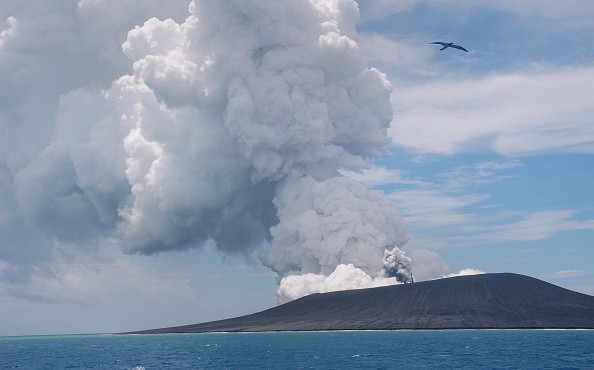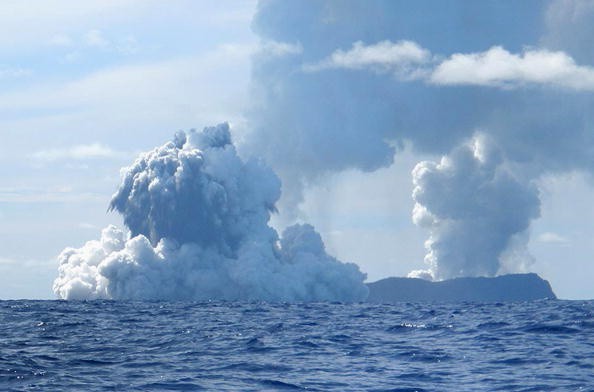

An erupting volcano in the kingdom of Tonga could possibly produce acid rain, which may pollute drinking water and harm people's skin and eyes, according to emergency services.
Potential Acidic Rainfall in Tonga
Plumes of smoke rose 18 kilometers (11 miles) into the sky from the distant Hunga Tonga-Hunga Ha'apai volcano on Monday, according to Phy.org.
However, TGS cautioned late Tuesday that if dust and gas are coupled with water, acidic rain may occur. No injuries have been recorded so far.
Residents were instructed to disconnect guttering systems from their rainwater storage systems until the situation was cleared up.
Acid rain may cause discomfort and skin irritation, as well as impaired and discolored vision if it comes into contact with the eyes, according to the study.
If acidic rain happens to get in contact with the eyes or skin, it is advised to seek immediate medical attention. The volcano is 65 km (41 miles) north of Nuku'alofa, Tonga's capital.
In 2015, the volcano erupted, forming a new island in its crater.
Air New Zealand cancelled a flight from Auckland to Nuku'alofa on Tuesday after an aviation code red was declared following the eruption.
Also Read: Volcanic Eruptions Underwater Release Enough Energy to Power an Entire Continent!
Insight into the Eruption
At approximately 8:30 p.m. on Sunday, the Hunga Tonga-Hunga Ha'apai match began to erupt in violence.
About 15 kilometers up in the sky, a plume ascended, containing either ash or steam. Volcano Discovery stated that the explosion could be heard up to 170 kilometers distant, citing social media sources.
Satellite imaging suggests steam plume with no ash evident, MetService's Volcanic Ash Advisory Center, which is part of a worldwide network responsible for monitoring the south Pacific area, stated. Volcano Discovery recorded amounts of sulfur dioxide, based on satellite measurements.
Popular YouTube channel GeologyHub claims that there are four vents in the area, and it looks like this eruption occurred from one of them. This suggests that a new island may have been built, and it's not the first time this has happened.
From Tongatapu, the major island of Tonga, photos on social media revealed the plume. Satellite images also recorded the plume bursting through the clouds in the high atmosphere, as well as other images shot from planes.
Meteorologists have been contacted by Newshub for further information.
Discovery of Hunga Tonga-Hunga Ha'apai
Hunga Tonga-Hunga Ha'apai was discovered in 2014, when an underwater volcano erupted. The ash has chemically interacted with the sea water in a manner that has cemented the island for seven years, making it unusually long-lasting.
In 2019, animal and plant life seemed to be flourishing on Hunga Tonga-Hunga Ha'apai.
According to the UN and EU-run Global Disaster Alert and Coordination System, the storm would have little effect on any nearby inhabited islands. An area that is deserted by people is located 65 kilometers northwest of Nuku'alofa, the capital city of the Tongan Islands.
This region of the Pacific has a history of underwater volcanic eruptions. New land was produced west of Tonga and a massive pumice raft larger than Manhattan was built in 2019.
In 2009 and 2006, there were similar accidents in the same area.
Related Article: New Sensors Help Detect and Predict Volcanic Eruptions
For more news, updates about volcanic eruption and similar topics don't forget to follow Nature World News!
© 2025 NatureWorldNews.com All rights reserved. Do not reproduce without permission.





